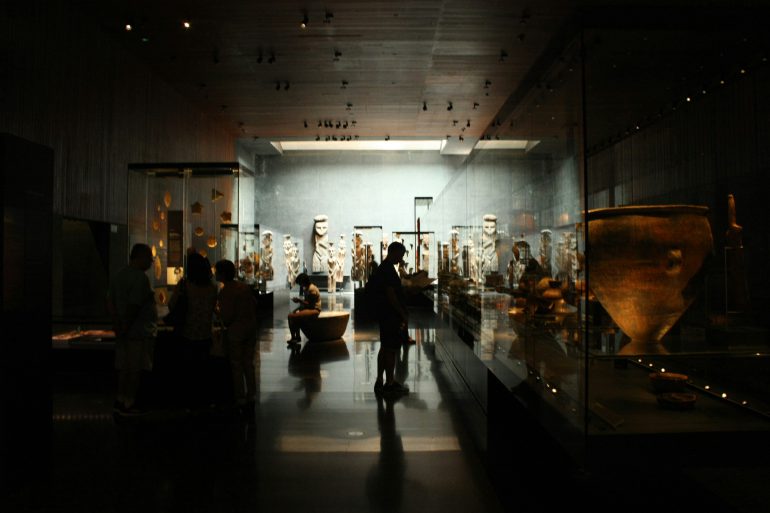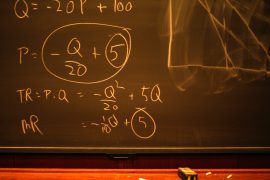When thinking about translation in a museum context, things that come to mind may include working with visitor maps, audio guides, wall texts and labels. There can, however, be a lot more to the story. In Semester 2 2022, students enrolled in FRNC2101 Practical Approaches to French 1 undertook a unique translation project designed in partnership with the Chau Chak Wing Museum, which took an interdisciplinary object-based approach to engage students and assess their learning. FRNC2101 seeks to expose students to the practical challenges of translating text from French to English in the field of arts and culture in the Francophone world, requiring engagement with translations of various forms and genres of text. This can include contemporary journalistic publications, excerpts from both older and contemporary novels, comic books, and advertisements. Students put these skills into practice in completing the main translation project for this course; collaboratively translating a three-volume set of photo albums from the museum’s collection titled Dans l’intimité de personnages illustres.
Published in 1945, these volumes are part of a series of twelve albums that are all signed by different but related authors, seemingly resulting from a family undertaking. It was then revealed, however, (thanks to the kind input of Christopher Jones, Collections Manager at the Chau Chak Wing Museum) that these albums had in fact all been devised and created by one Maurice Devriès, collector of photographic plates, publisher, and master of facsimiles. These albums, impressively curated to delude readers into thinking that they are perusing reproductions from a genuine family collection starting in 1845, feature copies of 19th century portraits of famous French people that include handwritten biographical notes in French below each photograph.
The art of translation
Before submitting their final translations, students transcribed the handwritten text into typed text to ensure that they were working on a version of the original text that was free of spelling errors and misunderstandings of the original script. The students then collaboratively developed a glossary through which they were able to identify 19th century French cultural references and vocabulary, and capture the authors’ writing style and satirical tone. More importantly, the glossary enabled them to undertake further research into who the illustrious people featured in the albums were and why they were included in this “panorama of portraits of the most important figures of the State, sciences, arts, literature, theatre, and other domains” (as stated by Pierre-Marie Lizerolles, alleged author of the first album).

Beyond the challenges that the source text presented (stemming largely from semantic, structural, grammatical and cultural/metalinguistic obstacles), students reflected on the physical nature of the photo albums, the relationship between the images and text, and the significance of such objects within the collection of the Chau Chak Wing Museum. These albums are linked to the emergence of the daguerreotype, as well as contemporaneous technological developments in printing. Some of the students likened the albums to the practice of “scrapbooking”. Not only do the albums provide insights into how renowned people where perceived in the eyes of the public at the time, they also influence perceptions of French heritage. The publication of Dans l’intimité de personnages illustres in 1945 is a key contribution to the re-ignition of patriotic pride in post-war France, making these albums of cultural and historical significance.
The nature of the project encouraged true group work and discussion with class peers. This process was highly effective in broadening our own ideas and concepts in terms of translation
Through their thorough investigation into the historical context surrounding the creation of these albums, and their work as budding translators, FRNC2101 students were able to produce an original and faithful English translation of the three albums of Dans l’intimité de personnages illustres. The text is now available on the Chau Chak Wing Museum’s website, publicly accessible and recognised as part of a landmark research collection.
Working with the Chau Chak Wing Museum was an exciting opportunity to put our learning into practice
Find out more
- Read about how other Sydney educators are integrating object-based learning in their work
- Integrate an object-based learning project into your own unit by contacting the Chau Chak Wing Museum’s Academic Engagement Curators at [email protected]





